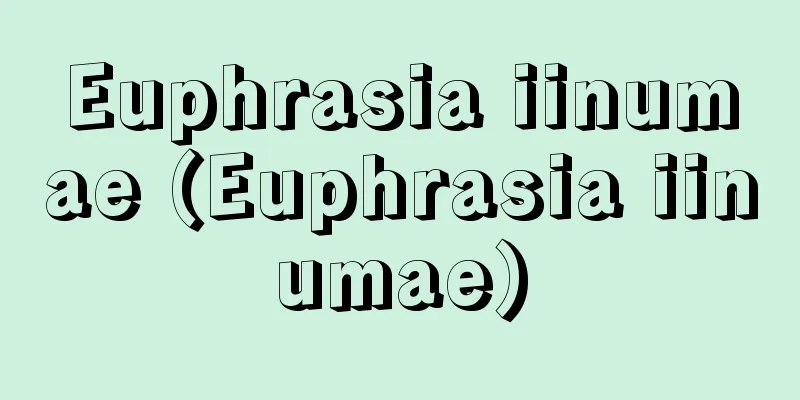Tibetan - Chibettogo (English spelling)

|
It is the language of Tibetans living in Tibet, Kashmir, Bhutan, Nepal, etc. It is considered to be part of the Tibeto-Burman language family along with Burmese. It has a population of over 3 million speakers, and is divided into Balti, Ladakhi (both in Kashmir), Lhasa dialect, Tsang dialect (both in central Tibet), Amdo dialect (Qinghai Province, China), Kam dialect (southeastern Guizhou Province, China), and many other dialects. It uses the Tibetan script, a phonetic script created in the 7th century based on Indian characters, and although the orthography is quite different from the pronunciation of modern Lhasa dialects, it shows a clear correspondence. A large amount of literature remains, including the Xizang (Tibetan) Tripitaka. Of the various dialects, Lhasa dialect is the central one, and has been studied the most. Below, we will discuss the Lhasa dialect. Phonologically, it has eight vowels and a considerably larger number of consonants than Japanese, including some relatively rare sounds such as voiceless liquids and voiceless nasals. However, each of the three voiceless nasals occurs in only one word (or morpheme). Stops and affricates are contrasted between aspirated and unvoiced, but some dialects have voiced sounds. The syllable structure is (consonant +) vowel (+ consonant or same vowel), but the number of types of syllable-final consonants is limited to a few. The accent is pitch accent. Grammatically, at the phrase level, the word order is very similar to Japanese. That is, the predicate is at the end of the sentence and the others are before the predicate, but there is no grammatically fixed order between them. Adjectives follow the noun they modify, but the relative clause that modifies the noun can be before or after (with some variation in form). As in Japanese, particles are placed after nouns (phrases). The predicate structure is not particularly complex, but the meanings of the auxiliary verbs used are quite difficult. Also, like Japanese, there is a wide variety of sentence-final particles. Nouns are basically monosyllabic or disyllabic, and verbs, except for compound words, have monosyllabic stems. Honorific language is well developed, and while it exists only for some nouns, in principle there is an honorific verb that corresponds to every verb (although most of these are compound words). Unlike Japanese, when describing the actions of a group including the person being spoken to, it is possible to use honorific expressions, even if the group includes the speaker himself. Some people count Tibetan as a so-called ergative language, but at least as far as the modern Lhasa dialect is concerned, this is a superficial view. [Yasuhito Yukawa] Source: Shogakukan Encyclopedia Nipponica About Encyclopedia Nipponica Information | Legend |
|
チベット地方、カシミール地方、ブータン、ネパールなどに住むチベット人の言語。系統的にはビルマ語などとチベット・ビルマ語族をなすとされる。話し手人口は300万を超え、バルティ語、ラダック語(以上カシミール)、ラサ方言、ツァン方言(以上チベット中部)、アムド方言(中国青海省)、カム方言(中国貴州省南東部)その他数多くの方言に分かれる。文字は、7世紀にインド系文字に倣ってつくられた表音文字であるチベット文字を用い、正書法は現代ラサ方言などの発音とはかなり食い違っているとはいえ、明確な対応関係を示す。『西蔵(チベット)大蔵経』など膨大な文献が残っている。諸方言中、ラサ方言はその中心的なものであり、研究ももっとも進んでいる。以下、ラサ方言について述べる。 音韻的には八つの母音、日本語などよりかなり数の多い子音を有し、後者のなかには、無声流音や無声鼻音といった比較的珍しい音が含まれる。ただし、3種類ある無声鼻音はそれぞれただ一つの単語(または形態素)にしか出てこない。閉鎖音や破擦音は有気・無気の対立であるが、ほかに有声音を有する方言もある。音節構造は(子音+)母音(+子音もしくは同一母音)であるが、音節末子音の種類は少数に限定されている。アクセントは高低アクセントである。文法的にみると、文節のレベルでは、語順は日本語に酷似している。すなわち、述語が文末にたち、それ以外のものは述語の前にたつが、それらの間には文法的に決まった順序というものは認められない。形容詞はそれが修飾する名詞に後続するが、名詞を修飾する関係節は前にも後ろにもたちうる(若干、形が変異する)。助詞が名詞(句)に後置される点は日本語と同様である。述語の構造はさして複雑ではないが、用いられる助動詞のたぐいの意味はかなりむずかしい。これまた日本語に似て終助詞のたぐいがかなり豊富である。名詞は一音節語、二音節語が基本であり、動詞は複合語を除いて一音節語幹である。敬語が発達しており、名詞についてはその一部に存在するだけであるが、動詞については原則としてどの動詞にも対応する敬語動詞が存在する(ただしその多くは複合語となる)。日本語と異なり、話し相手を含む集団の行為を表す場合には、その集団に話し手本人が含まれていても、敬語表現を用いることが可能である。なお、チベット語をいわゆる能格言語に数える人がいるが、少なくとも現代ラサ方言に関する限り、それは皮相な見方である。 [湯川恭敏] 出典 小学館 日本大百科全書(ニッポニカ)日本大百科全書(ニッポニカ)について 情報 | 凡例 |
<<: Tibet Autonomous Region - Tibet (English spelling)
>>: Tibet-India Treaty - Tibet-India Treaty
Recommend
Kouwakamai - Kouwakamai
One of the performing arts that flourished from t...
Gorodetskiy (English spelling) Sergey Mitrofanovich Gorodetskiy
Russian poet. Graduated from St. Petersburg Unive...
Friendship - Yuai
〘 noun 〙 (adjective verb) The closeness between br...
José Ortega y Gasset
1883‐1955 Spanish philosopher. His family had many...
Mikszáth Kálmán
Born: January 16, 1847 in Scraboniya [Died] May 28...
Uji Bridge
A bridge over the Uji River that flows through Uji...
Harry Edmund Martinson
Swedish poet and writer. His father died when he ...
Amenorrhea - Amenorrhea
[What kind of disease is it?] Menstruation is defi...
Work index
…Bond transformed this formula into the following...
Mortgage marker stone
A translation of the Greek word horos (plural horo...
Ganki - Ganki
…In the Aomori region, this is called komise. Not...
"Introduction to Comparative Studies of Indo-European Languages"
...His clear writing even conveys the mental ease...
Voith-Schneider propeller
…A type of propeller in which the blades rotate a...
Latin alphabet (English spelling)
…In the past, pictographic and ideographical writ...
Colour
…It is the family with the largest number of gene...


![Ogimi [village] - Ogimi](/upload/images/67cb147ce3c17.webp)






